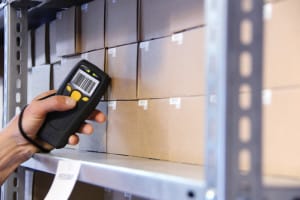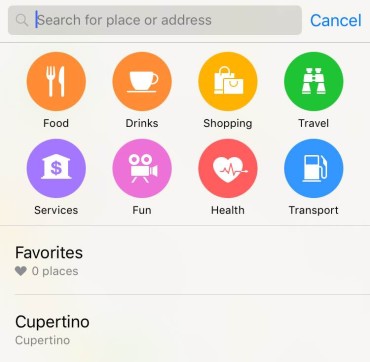
A major warehouse used handheld mobile devices and Datek supply-chain software for real-time inventory control and anticipatory shipping.
Name of Organization: Merchandise Warehouse Company
Industry: Distribution
Location: Indianapolis, IN USA
Business Opportunity or Challenge Encountered:
Behind every successful retail outlet is an efficient warehouse operation. Warehouses may be responsible for goods for a longer time than retailers, and therefore need to ensure that everything is handled with the best possible care. If food is involved, that commitment to care is heightened.
Merchandise Warehouse Company (MWC) operates two multi-temperature warehouses, each of them 400,00 square feet. MWC provides services including blast freezing, tempering, inspection, labeling, temperature monitoring, kitting and assembly, import/export and packaging. There was no room at all for uncertainty. Clients’ food products could spoil if not maintained at the right temperatures. The same goes for pharmaceuticals.
MWC needed real-time information to accurately understand the state of items in its warehouse, 24 hours a day. The company wanted technology that would provide real-time data visibility across its entire operation, enable systematic quality assurance control with comprehensive traceability, including inspections and holds, and help with anticipatory shipping.
How This Business Opportunity or Challenge Was Met:
MWC employed a range of technologies to help it track and analyze data on what was happening within its warehouses. These included closed-circuit TV, electronic data interchange (EDI) and warehouse management systems, as well as mobile computers and scanners transmitting information about inventory. The technologies gave MWC customers online access to activity reports, temperatures, climate monitoring and vital information about inventory.
MWC also looked to employ the use of multiple mobile computing devices including forklift, handhelds and others. The handheld mobile computers — OMNII XT15 devices from Zebra — were ruggedized and rated for cold storage environments. The devices run on the Microsoft Windows and interface with Datex FootPrint WMS, which can interface with Microsoft SQL server, to provide functionality and real-time data.
The solution also includes a variety of tools to assist pallet management. Every pallet is traceable, from the time it arrives until the time it leaves, and is time stamped and sorted by the task completed. The software reports pallets as unavailable during picking and reallocates to a new pallet without having to come to the dock office.
MWC also adopted a two-step “putaway” process – regulating and monitoring the flow of goods from initial receipt into the warehouse to stocking at its final destination. The solution is intended to help increase the speed and agility of the putaway process when different types of equipment are used to locate inventory in the correct locations.
The new solution also includes special functionality for cold storage warehouses, including temperature reading and recording, and the ability to restrict inventory to specific temperature zones. Using the workflow-based warehouse management system, MWC now can automate processes specifically developed for each customer. This helps to ensure greater accuracy and labor productivity.
Measurable/Quantifiable and “Soft” Benefits From This Initiative:
The mobile computing devices help MWC to accurately capture more billing events in real time, and thus help reduce the labor associated with billing and associated paperwork. That’s because there are fewer errors to find and correct. The Datex FootPrint WMS has been instrumental in helping MWC managers dealing with “catch weight,” which is a common issue in the cold storage warehouse and food industry. Unprocessed food products – particularly meats — naturally vary in size, and the actual weight may vary when it hits retail shelves.
In dealing with third-party logistics customers, it is often the case that inventory and freight owners need continual communication and information about operations, inventory levels, orders and more. Using the Datex-Zebra combined technology has enabled MWC to empower clients to have real-time access to information and reports however and whenever it is needed. The flow of real time business intelligence has increased customer satisfaction.
In addition, an optimized picking process enables MWC to allocate inventory for shipping using a predetermined set of criteria so that the product can be staged and prepared ahead of time or simply picked and loaded onto the truck. This helps to maximize the space used in the staging area.
The solution has helped MWC realize an improvement in inventory accuracy from 98.6 percent to 99.9 percent, the case study reports.
(Source: Datex)
Related:
How a Walmart app speeds inventory control
Case studies: supply-chain management




























